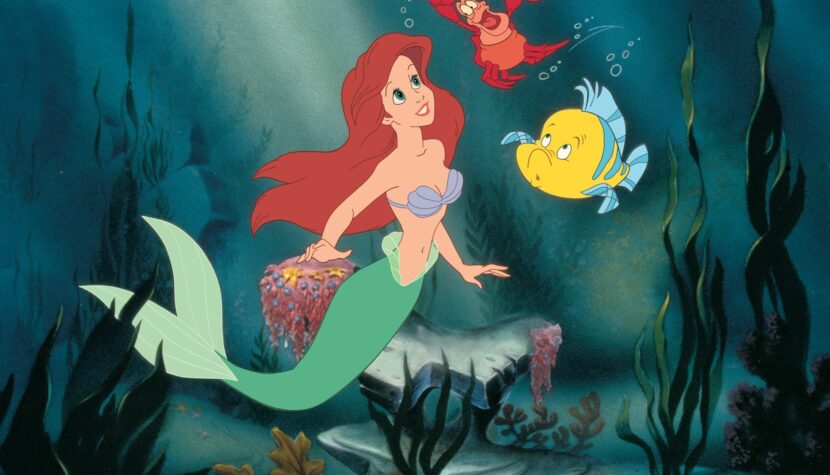THE LITTLE MERMAID. Done by the book and devoid of risk

The Little Mermaid (1989) is popularly regarded as the opening of the Renaissance era for Walt Disney during the 1990s. This is due to a change in dramatic tone, the first attempts at using computer animation, and the visible grander scale of the film project. Undoubtedly, this is true, and the film’s catchy beginning immediately indicates that we are dealing with a different, more modern kind of cinema. However, at its core, the animation by John Musker and Ron Clements is another typical tale that is much closer to archetypal fairy tales like Sleeping Beauty or Snow White and the Seven Dwarfs than to ideologically neutral works like Mulan,” which tackle postcolonial narratives such as Pocahontas and Tarzan, reinterpreting ambitious literary classics like The Hunchback of Notre Dame or The Lion King or the modernist Hercules.
It’s these subsequent films that truly gave rise to a new idea of Disney cinema. The studio continued to prioritize adventure, musical elements, and humor, but simultaneously developed more serious, “adult” themes. Creators found time to contemplate Western cultural and political heritage, as well as explore issues of identity and social tensions. This narrative complexity fully demonstrated the studio’s rejuvenation, manifesting in previously unseen thematic depth and dramatic weight of the films. Elevated musical composition and spectacular visual aspects generated interest and ultimately, marketing success. Though The Little Mermaid was executed with appropriate grandeur, in comparison to Disney’s later animated hits of the 90s, it remains conservative and conventional cinema. Today, it can only be defended by a sense of nostalgia.

In The Little Mermaid, it’s once again about little more than the kiss of lovers and “love at first sight.” Ariel is the most cherished yet disobedient daughter of Triton, ruler of the underwater kingdom. She would prefer to spend her days observing human ships. Every lost human item, whether a fork or a pipe, is a priceless artifact to her. Her father, convinced that every human is a barbarian, strictly forbids any contact with them, even innocent surface visits driven by curiosity. Ariel, however, disregards Triton’s words and seizes the opportunity to rescue Eric, who is, of course, a prince. Brave, handsome, and… not much else can be said about him. Upon seeing Ariel, he becomes infatuated with her beauty and voice. Yet Ariel knows that as a mermaid, she has no chance with the human prince.
At this point, the sea witch Ursula enters the scene: undoubtedly one of the leading and most popular villains in Disney history. However, if Scar from The Lion King intimidates with his duplicity and plotting, Hades from “Hercules” is equally cynical and ruthless, and Shan Yu from Mulan is shrouded in mystery combined with immense physical strength, then Ursula causes unease through her caricatured appearance mixed with dark sensuality. Her loudness, expressive gestures, frequent dramatic poses, provocative makeup, abundant yet gray hair, and the black dress that envelops her octopus tentacles truly capture the imagination. Ursula appears as a deranged femme fatale. It’s not surprising that naive Ariel succumbs to her charms.

Ursula’s magnetic image is the greatest strength of The Little Mermaid. It’s a pity that behind this intriguing villainous image, there isn’t a more complex psychological profile and, more importantly, motivations that are harder to evaluate definitively. We know that Ursula was banished from the court and her sole desire now is to exact revenge on Triton. That’s all that has to suffice for both us and her.
The Little Mermaid is animation done by the book and devoid of risk: both due to the predictability of the plot and the obvious visual and color symbolism. It relies on a stark division between good and evil characters. Ursula’s chambers are filled with darkness and shadows, while Triton’s kingdom is bright and idyllic. In this purely formal dimension, later, also conventional works like Beauty and the Beast, managed to propose more. There, what is “black” and what is “white” took on new, opposite meanings in the finale. The Little Mermaid remains, to the utmost extent, a herald of change, a technical step forward. For Disney’s true gems, one had to wait a few more years.

